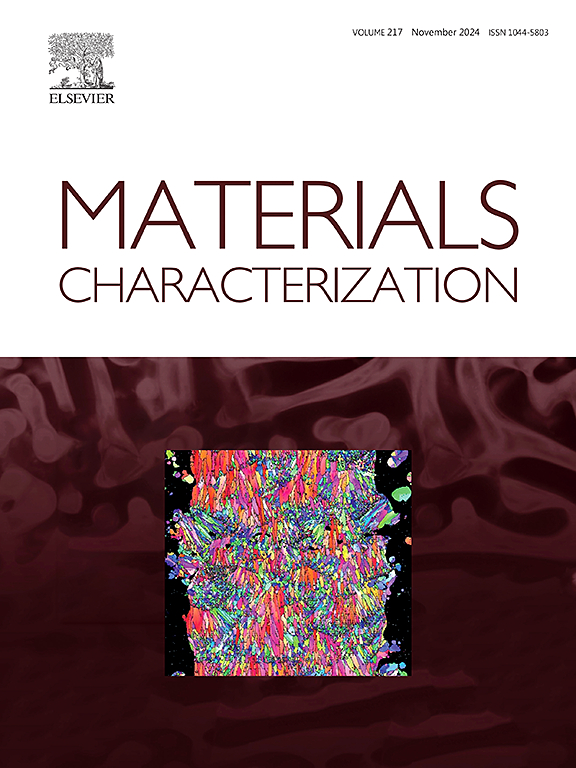Effect of annealing twinning on the microstructure and microtexture of pure nickel
IF 4.8
2区 材料科学
Q1 MATERIALS SCIENCE, CHARACTERIZATION & TESTING
引用次数: 0
Abstract
The evolution of microstructure, including recrystallization, microtexture and twinning of pure nickel under isochronal annealing at a series of temperatures, was investigated by electron backscatter diffraction (EBSD). The results indicated that the typical copper-type rolling texture was present in the as-deformed pure nickel plate. During static recrystallization (SRX), new SRX grains were found to preferentially consume higher Taylor factor components, such as the Copper component. For SRX grains, the Taylor factor and annealing twinning had an interactive effect on texture evolution. Certain recrystallization texture components, e.g., the Q component, showed a growing tendency upon recrystallization first and then declined during the grain growth phase consistent with the development of annealing twinning. The processes of SRX of pure nickel were dominated by discontinuous static recrystallization (DSRX) characterized by bulging/serration of pre-existing high-angle grain boundaries (HAGBs) and the formation of necklace-type structures between deformed grains. The preferred position of necklacing and the curvature of a bulging lay on the side of deformed grains with comparatively larger orientation gradient. Furthermore, growth twins enhanced the boundary misorientation angle of recrystallization front in the range of 10–20 deg., facilitating bulging and separation. Multiple twinning chains, even up to the third generation, were observed to support further expansion of the layered necklace grains. Continuous static recrystallization (CSRX) accompanied with annealing-induced higher angle boundaries, though present, was quite less significant.
求助全文
约1分钟内获得全文
求助全文
来源期刊

Materials Characterization
工程技术-材料科学:表征与测试
CiteScore
7.60
自引率
8.50%
发文量
746
审稿时长
36 days
期刊介绍:
Materials Characterization features original articles and state-of-the-art reviews on theoretical and practical aspects of the structure and behaviour of materials.
The Journal focuses on all characterization techniques, including all forms of microscopy (light, electron, acoustic, etc.,) and analysis (especially microanalysis and surface analytical techniques). Developments in both this wide range of techniques and their application to the quantification of the microstructure of materials are essential facets of the Journal.
The Journal provides the Materials Scientist/Engineer with up-to-date information on many types of materials with an underlying theme of explaining the behavior of materials using novel approaches. Materials covered by the journal include:
Metals & Alloys
Ceramics
Nanomaterials
Biomedical materials
Optical materials
Composites
Natural Materials.
 求助内容:
求助内容: 应助结果提醒方式:
应助结果提醒方式:


